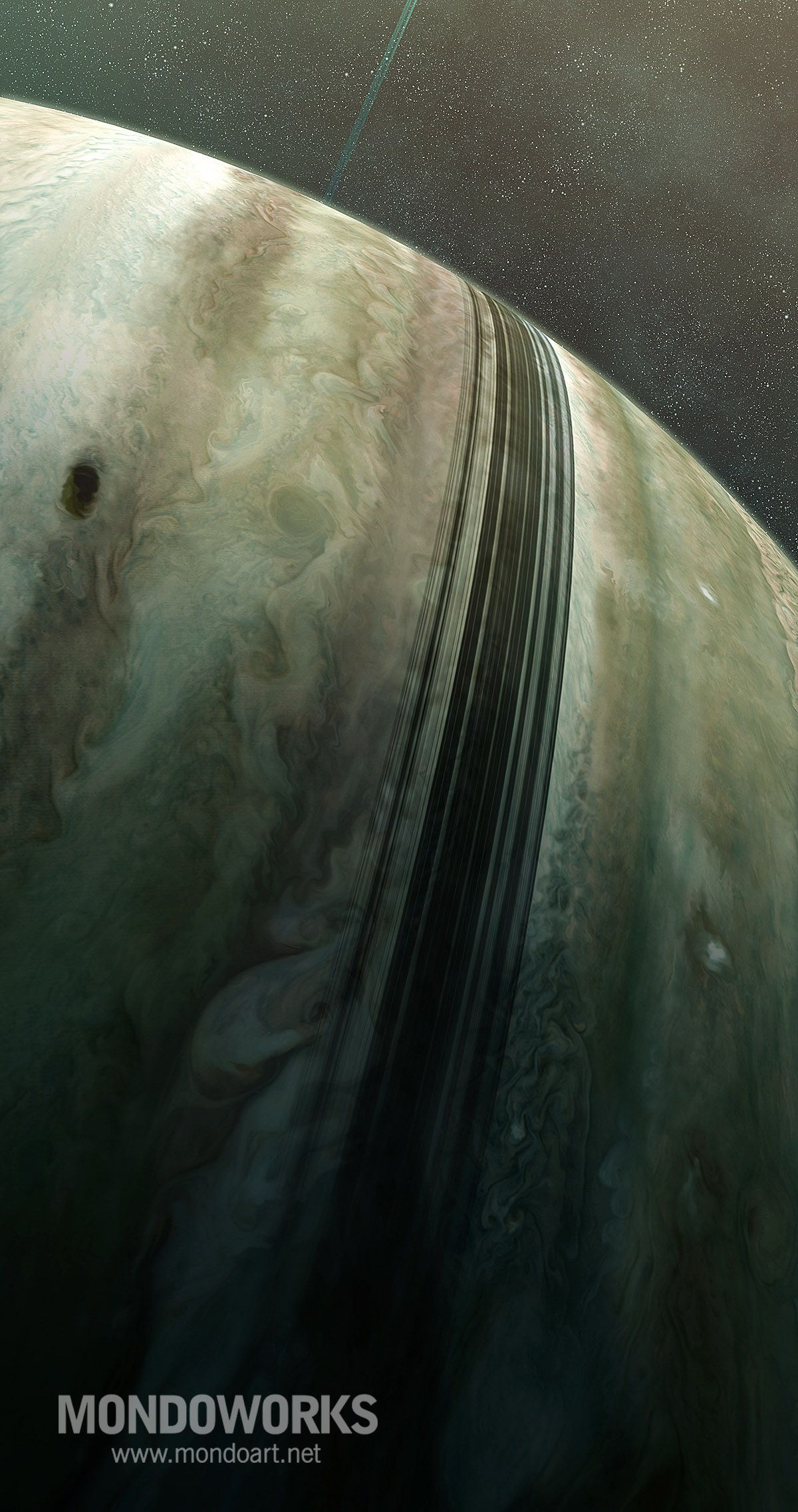 There are three ways that thicker planetary rings (the rings around planets) have been proposed to have formed: from material of the protoplanetary disk that was within the Roche limit of the planet and thus could not coalesce to form moons; from the debris of a moon that was disrupted by a large impact; or from the debris of a moon that was disrupted by tidal stresses when it passed within the planet’s Roche limit. Most rings were thought to be unstable and to dissipate over the course of tens or hundreds of millions of years, but it now appears that Saturn’s rings might be quite old, dating to the early days of the Solar System.
There are three ways that thicker planetary rings (the rings around planets) have been proposed to have formed: from material of the protoplanetary disk that was within the Roche limit of the planet and thus could not coalesce to form moons; from the debris of a moon that was disrupted by a large impact; or from the debris of a moon that was disrupted by tidal stresses when it passed within the planet’s Roche limit. Most rings were thought to be unstable and to dissipate over the course of tens or hundreds of millions of years, but it now appears that Saturn’s rings might be quite old, dating to the early days of the Solar System.
Fainter planetary rings can form as a result of meteoroid impacts with moons orbiting around the planet or, in case of Saturn’s E-ring, the ejecta of cryovolcanic material.
The composition of ring particles varies; they may be silicate or icy dust. Larger rocks and boulders may also be present, and in 2007 tidal effects from eight ‘moonlets’ only a few hundred meters across were detected within Saturn’s rings. The maximum size of a ring particle is determined by the specific strength of the material it is made of, its density, and the tidal force at its altitude. The tidal force is proportional to the average density inside the radius of the ring, or to the mass of the planet divided by the radius of the ring cubed. It is also inversely proportional to the square of the orbital period of the ring.
Sometimes rings will have “shepherd” moons, small moons that orbit near the inner or outer edges of rings or within gaps in the rings. The gravity of shepherd moons serves to maintain a sharply defined edge to the ring; material that drifts closer to the shepherd moon’s orbit is either deflected back into the body of the ring, ejected from the system, or accreted onto the moon itself.
It is also predicted that Phobos, a moon of Mars, will break up and form into a planetary ring in about 50 million years, because its low orbit with an orbital period that is shorter than a Martian day is decaying due to tidal deceleration. *Wikipedia
For commissions and syndications contact [email protected]
Hi! I am a robot. I just upvoted you! I found similar content that readers might be interested in:
https://en.wikipedia.org/wiki/Ring_system
Downvoting a post can decrease pending rewards and make it less visible. Common reasons:
Submit